 W
WThe archaeology of the Americas is the study of the archaeology of North America, Central America, South America and the Caribbean. This includes the study of pre-historic/Pre-Columbian and historic indigenous American peoples, as well as historical archaeology of more recent eras.
 W
WThis list of pre-Columbian cultures includes those civilizations and cultures of the Americas which flourished prior to the European colonization of the Americas.
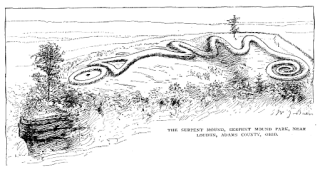 W
WSeveral chronologies in the archaeology of the Americas include an Archaic Period or Archaic stage etc. It is often sub-divided, for example into "Early", "Middle" and "Late", or alternatively "Lower" and "Upper", stages. The dates, and the characteristics of the period called "Archaic" vary between different parts of the Americas. Sometimes also referred to as the "Pre-Ceramic stage" or period, it followed the Lithic stage and was superseded by the Formative stage, or a Preformative stage. The typical broad use of the terms is as follows:In Mesoamerican chronology the Archaic runs from about 3500 BC to 1800 BC; sites include Coxcatlan Cave, Tehuacán, showing the development of maize. In the periodization of pre-Columbian Peru the term may not be used, replaced by the Pre-Ceramic. In the North American chronology the Archaic is known generally as the period from 11,500-3200 cal yr B.P. and is usually subdivided into three subperiods: Early Archaic, Middle Archaic, and Late Archaic.
 W
WNative American pottery is an art form with at least a 7500-year history in the Americas. Pottery is fired ceramics with clay as a component. Ceramics are used for utilitarian cooking vessels, serving and storage vessels, pipes, funerary urns, censers, musical instruments, ceremonial items, masks, toys, sculptures, and a myriad of other art forms.
 W
WCeremonial Stone Landscapes is the term used by USET, United Southern and Eastern Tribes, Inc., a non-profit, intertribal organization of American Indians, for certain stone work sites in eastern North America. Elements often found at these sites include dry stone walls, rock piles, stone chambers, unusually-shaped boulders, split boulders with stones inserted in the split, and boulders propped up off the ground with smaller rocks. While neither the age of these sites nor the idea of their creation by indigenous peoples has been accepted generally, interest in the sites is increasing. This interest is generated in part by USET's Resolution #2007:037, entitled Sacred Ceremonial Stone Landscapes Found in the Ancestral Territories of United Southern and Eastern Tribes, Inc. Member Tribes.
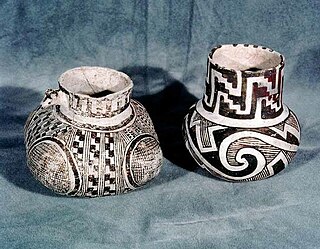 W
WCibola White Ware is a ceramic tradition of Arizona and New Mexico, dating from 1225-1325 CE.
 W
WGran Coclé is an archaeological culture area of the so-called Intermediate Area in pre-Columbian Central America. The area largely coincides with the modern-day Panamanian province of Coclé, and consisted of a number of identifiable native cultures. Archaeologists have loosely designated these cultures by pottery style. The poorly studied La Mula period ranged from 150 BC to AD 300. It was followed by the Tonosi period, from AD 300 to AD 550, and by the Cubita period, from AD 550 to AD 700. A unified Native American culture appears to have flourished in this area from approximately 1200 BC until the 16th century.
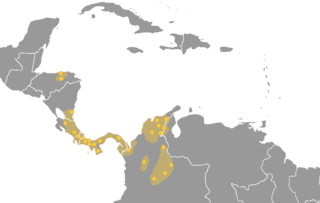 W
WThe Intermediate Area is an archaeological geographical area of the Americas that was defined in its clearest form by Gordon R. Willey in his 1971 book An Introduction to American Archaeology, Vol. 2: South America. It comprises the geographical region between Mesoamerica to the north and the Central Andes to the south, including portions of Honduras and most of the territory of the republics of Nicaragua, Costa Rica, Panama, Colombia, Venezuela, and Ecuador. As an archaeological concept, the Intermediate Area has always been somewhat poorly defined.
 W
WA limited geography model for the Book of Mormon is one of several theories by Latter Day Saint movement scholars that the book's narrative was a historical record of people in a limited geographical region, rather than of the entire Western Hemisphere as believed by some early Latter Day Saints.
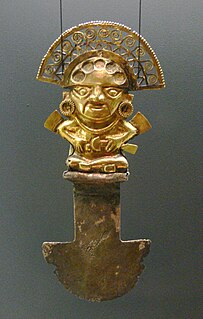 W
WMetallurgy in pre-Columbian America is the extraction, purification and alloying of metals and metal crafting by Indigenous peoples of the Americas prior to European contact in the late 15th century. Indigenous Americans have been using native metals from ancient times, with recent finds of gold artifacts in the Andean region dated to 2155–1936 BCE, and North American copper finds dated to approximately 5000 BCE. The metal would have been found in nature without need for smelting, and shaped into the desired form using hot and cold hammering without chemical alteration or alloying. To date "no one has found evidence that points to the use of melting, smelting and casting in prehistoric eastern North America." In South America the case is quite different. Indigenous South Americans had full metallurgy with smelting and various metals being purposely alloyed. Metallurgy in Mesoamerica and Western Mexico may have developed following contact with South America through Ecuadorian marine traders.
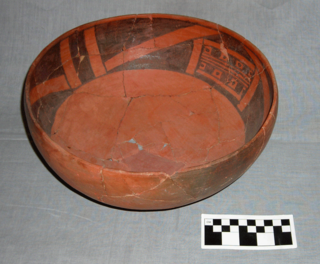 W
WRio Grande Glaze Ware is a late prehistoric and historic pottery tradition of the Puebloan peoples of New Mexico. The tradition involved painting pots with black paint made with lead ore; as the pots were fired the black paint fused and sometimes ran. The tradition lasted from AD 1315 to 1700. Rio Grande Glaze Ware was made or used in a number of villages from the Santa Fe area to the north end of Elephant Butte Reservoir, and from the valley of the Rio Puerco east to the upper Pecos River Valley.
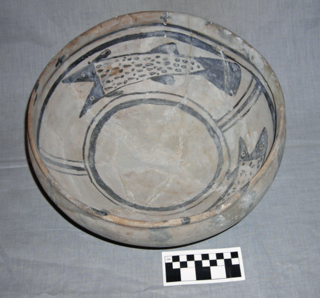 W
WThe Rio Grande white wares comprise multiple pottery traditions of the prehistoric Puebloan peoples of New Mexico. About AD 750, the beginning of the Pueblo I Era, after adhering to a different and widespread regional ceramic tradition for generations, potters of the Rio Grande region of New Mexico began developing distinctly local varieties of black-on-white pottery. This pottery involved the use of black mineral paint or black vegetal paint on a white, off-white, or light gray background. The black-on-white tradition finally died out about AD 1750.
 W
WRoosevelt Red Ware, also known as Salado Red Ware and Salado Polychrome, is a late prehistoric pottery tradition found across large portions of Arizona and New Mexico. The tradition involves the combination of red, white, and black paint in varying configurations along with compositional and morphological characteristics. This ceramic tradition begins about AD 1280-1290 and lasts until at least AD 1450 based on tree-ring dating.
 W
WSan Lorenzo Tenochtitlán or San Lorenzo is the collective name for three related archaeological sites—San Lorenzo, Tenochtitlán and Potrero Nuevo—located in the southeast portion of the Mexican state of Veracruz. Along with La Venta and Tres Zapotes, it was one of the three major cities of the Olmec, and the major center of Olmec culture from 1200 BCE to 900 BCE. San Lorenzo Tenochtitlán is best known today for the colossal stone heads unearthed there, the greatest of which weigh 28 metric tons or more and are 3 metres (9.8 ft) high.
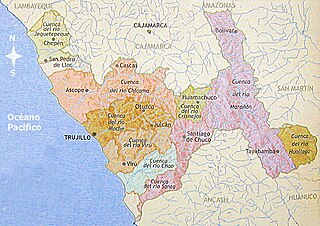 W
WThe Viru Valley is located in La Libertad Region on the north west coast of Peru.